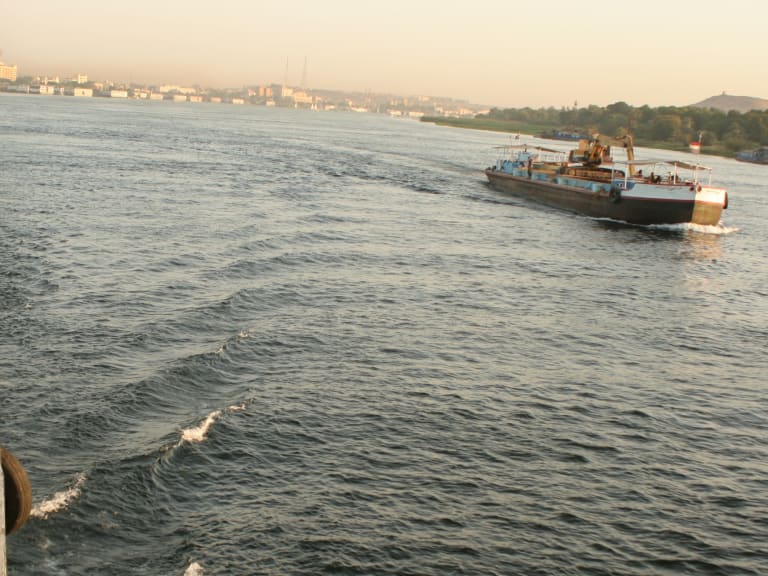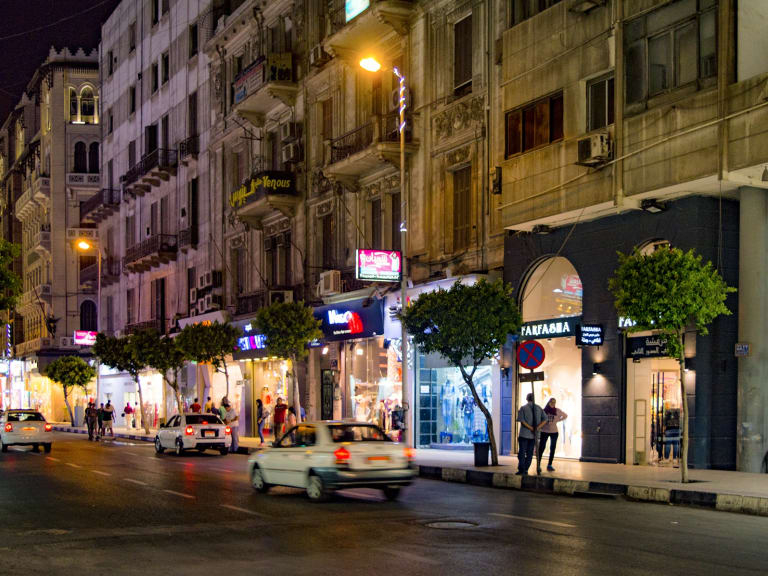More about: Cairo in 1 Day: a guidebook for getting the most out of your visit
Egypt is a fascinating country, ruled by pharaohs, sultans, Romans and the British, although the list could be longer. Each domination has left a distinctive mark on the appearance of the cities as well as the culture of the people. Our tour starts at Saladin's Citadel and ends on a boat. Read on and discover the other stages
Enter the medieval centre of the Islamic world

The Citadel of Saladin (Qalaat Salāḥ ad-Dīn) was built in the 12th century to protect Cairo from possible Crusader attacks. Strategically located on a promontory at the foot of Mokattam Hill, it dominates the city and is very difficult to conquer. From its walls one enjoys an incomparable view over the metropolis, the desert and the pyramids of Giza.
This gigantic enclosure has been declared a World Heritage Site by Unesco and is home to monuments that are not to be missed:
- Mehmet Ali Pasha Mosque or Alabaster Mosque. It is famous for its tall, slender minarets, the great marble pulpit and the more than 136 stained-glass windows in the domes. The interior vaulting is marvellous and somewhat reminiscent of the mosques of Istanbul. It is not for nothing that it is the most visited place of worship in the country.
- Al-Gawhara, a forgotten gem. The palace consists of halls, rooms and chambers. The walls and ceilings are decorated with Baroque-style gilded ornaments with repeated motifs and natural scenes. The highlight of the palace is the richly decorated throne room where Sultan Mohammed Ali used to receive guests.
- Al-Nasir Muhammad Mosque, the royal mosque. Under its roof, the sultans performed their Friday prayers. It is an austere building that shelters a rectangular courtyard with a sanctuary on the qibla side (the place where Muslims pray) surrounded by arcades.
- Sulayman Pasha Mosque, the first mosque built by the Ottomans. It is small in size and surrounded by a garden enclosure. You will see floral paintings, colourful inscriptions and elegant marble cladding.
- Egyptian military museum. Its wings trace the history of armies from the time of the Pharaohs to the present. You will see artillery pieces, war paintings, Israeli tanks from the Yom Kippur War and an exhibition on the military operation in Egypt during World War II.
Get lost in Khan Al Khalili suq

Khan el-Khalili is a famous bazaar in the heart of Cairo. It's close to the Saladin Citadel and is the perfect place to find the perfect souvenir. Before you go shopping, keep these three tips in mind: always bargain, always carry cash and don't go into every shop. To help you choose, we've compiled some of the merchandise available:
- Gold jewellery
- Bastet statuettes, the typical Egyptian souvenir. In the time of the pharaohs, Bastet was the goddess of war and fertility. She had a feline appearance and the cat was her totem animal. You will find an endless number of alabaster or granite figures, the price depends on the material used.
- Leather articles
- Spices. The most typical is dukkah, a mixture of thyme, garlic, mint and pulverised hazelnuts. It is used to flavour meat and fish. Another characteristic ingredient is hibiscus. Its sun-dried flowers are used to make the national tea, karkade or bissap. You can also buy black cumin (the 'gold of the pharaohs'), aniseed, coriander, bay leaves and tahini, a thick paste made from ground sesame.
- Replicas of papyrus manuscripts and paintings
- Khayamiya, hand-stitched textile appliques
- Cachimba, a classic of Egypt and the Muslim world. Strolling through the streets of Cairo it is not uncommon to see locals sharing a shisha. Hundreds of colourful devices, aromatic tobaccos, cleaning kits and extra mouthpieces can be found in the market.
- Silver, copper and brass
The market was built on the site of the former burial place of the Fatimid caliphs. In the 14th century it was a caravanserai (an inn for caravans) and grew into a major commercial complex. Today it is a labyrinth of evocative alleyways. Touring Khan Al Khalili will take some time but I assure you it's worth it.
Take a break

Finding the perfect bargain takes strength, but there is no shortage of options to recharge your batteries. The most recommended is in the market itself: El Fishawi, a historic cafe opened in 1979. When Napoleon Bonaparte invaded Egypt, the establishment was already serving tea and karkade. It is divided into three parts: el-Bosfor (the room dedicated to King Farouk, decorated with ebony furniture and silver and crystal antiques), The Masterpiece (ornamented with shells, ivory and arabesques) and Rhyme, the area dedicated to the rhyming contests held during Ramadan. Open 24 hours a day from Monday to Sunday.
Egyptian specialities include hawawshi (a crispy pita stuffed with meat, onions, hot peppers and chopped herbs), fattah (boiled beef or lamb, seasoned and served on a bed of rice and toasted pita bread. It is usually accompanied by a tomato and garlic sauce) or mulukhiyah, boiled leaves of white jute and other plants. It is mixed with chicken broth to the ideal thickness and served with rice and chunks of meat.
If you're travelling to Cairo in January I recommend ordering Hommos El Sham or halabessa, a spicy tomato soup with chickpeas, garlic and onions, served hot and garnished with cumin, chilli and lemon. Although temperatures are milder than on the mainland, January is the coldest month and a hot dish always comes in handy.
Stand with your mouth open in front of the pyramids

On a full stomach you can head to Cairo's main attraction: the pyramids. These witnesses to the time of the pharaohs are located in Giza, a suburb of the capital on the west bank of the Nile. Since you're only staying for a day, you won't be able to do the full tour. An exhaustive visit to the complex would take about eight hours. However, it is worth the effort to get a close-up view of these ancient monuments.
The archaeological complex consists of the pyramids of Cheops, Mycerinus and the Queens, a necropolis, the Temple of the Valley and the Great Sphinx. Here you can take some impressive photos, especially if you go a little further afield and climb the nearby hills. Another option is from the top of a camel. In the surrounding area you will find dozens of people offering rides on these placid animals.
End the day by cruising the Nile

To end the day in style I recommend booking a sunset cruise. In Egypt, a traditional experience involves a ride on a falua, a small one- or two-sailed, triangular-shaped boat. Cruises depart from various points in the city, including Giza. You can choose from several options; the ones that fit your plan last between one and two hours and often include dinner and/or a belly-dancing show.
How can you get around Cairo?

The capital of Egypt is huge and densely populated. Like all major cities, the fastest mode of transport is the metro. The underground network consists of three lines (red, yellow and green) and carries thousands of passengers every day. The first car leaves at 5:15 and the last one at 00:30. To be honest, it's the fastest but not the most comfortable option: the carriages are often crowded and you might run into pickpockets.
If possible, I recommend avoiding taxis - they tend to inflate their fares if they transport tourists - and choosing instead Uber or Careem, a local app. Other options include public buses, private minibuses and ferries across the Nile. If you're looking for a way to get between the airfield and your hotel, I recommend reading the post on getting between the airport and the city.
Is Cairo worth seeing in a day?

It depends, if you are passionate about ancient Egypt or Islamic art, one day is not enough. In this case you should spend at least three days in Cairo. However, if Cairo is part of a longer tour that includes, for example, Alexandria and the Mediterranean coast, Luxor or the Red Sea resorts, 24 hours will give you the opportunity to see the highlights. Of course, you'll need to wake up early to make the most of the day.




